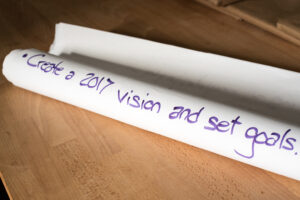Whether you’re a budding entrepreneur working overtime to get your idea off the ground or an established business hustling to fulfill growing customer requests, addressing time and cost efficiency will lead to increased opportunities. At trepwise, we work with our clients to identify, plan, and design efficiencies that can launch leaders and their companies into growth mode. There is no one size fits all approach, so the first step is to truly understand how and why everything is currently executed in your company. For instance, opportunities to improve efficiency in a quick service restaurant will be vastly different from those in a fine dining setting. Once you have your current processes down, there are a few steps that will propel you on your quest for a more efficient business.
Fostering an Efficient Team

Identifying opportunities to make your business faster, less costly, and stronger starts with people. Running an efficient company requires a culture that values continual improvement. Therefore, buy-in is critical. So how do you create an environment that actively seeks areas of improvement? Start with the key stakeholders who know the most about the work – your employees! Creating forums to hear from those directly involved in your work is the best way to both identify areas of opportunity and align everyone to take ownership of progress towards efficiency. Variety is key, from one-on-ones with leadership to encourage individuals to collaborative retreats to kick start improvement. Across the various meetings it is essential to keep communication consistent and focused. Groups channels, like Slack, can allow information to flow throughout the team to improve the likelihood of identifying efficiencies that benefit everyone.
Remember that as much as your team loves your company/their work, they still need personalized incentives to work towards a more efficient environment. Be sure to think through how you will recognize, reward, and implement employees’ ideas so that the culture of efficiency becomes both sustainable and exciting.
Planning for Efficiency
So now that you have a team ripe with ideas to make their work faster, cheaper, etc. you need to carefully plan and implement in a way that avoids compromising quality/value in your end product or service. The key to maintaining, or even improving, value while creating efficiencies can all be tied to a company’s vision.
In short, a vision helps align all players in the organization to ensure that they are moving towards their ultimate desired impact (or the change they want to achieve in the world). Passing each opportunity for efficiency through a vision gut-check can be incredibly helpful in understanding what efforts contribute to this vision and should be implemented, and which detract from the vision and should be avoided. It can help to start with all of your current processes and ask the question: Why do we do this in this manner? If the answer is “Because that is how we have always done it,” chances are there is opportunity for improvement that is also more vision-aligned.
Implementing Efficient Processes
What is the key to implementing efficient processes? Allowing time to reflect.
The above statement may seem counterintuitive, but once you have dedicated your team to incorporating new processes into their workflow, the most important next step is to schedule time to reflect and measure the success of these efforts. You have to give yourself the time and space to analyze whether these methods are really, truly efficient. If all data signs point to success, that’s great! But more often than not there are still ways to improve what you’ve already put in place. If the new process is actually not beneficial, you’ll certainly want to know that too. Set some time aside for yourself and your team to measure how efficient your newly implemented efficiencies actually are. We recommend designing a scorecard to track time and cost efficiencies over time. Remember that while a new process may require a slower learning curve up front, it may lead to some excellent long-term benefits, so be sure to give yourself enough time for the team to become ‘expert’ in their new methods before deciding whether the process is the right fit for your efficiency goals.

No matter your size, industry, or stage, your business can benefit from a focus on efficiency. In order to leverage these opportunities, you must create a culture that revolves around continual improvement. Additionally, any and all opportunities to do something faster or at a better margin should not compromise your core value and vision as an organization. Finally, after creating buy-in and identifying strategic initiatives, you need to keep your hand on the pulse of implementation by measuring how efficient your new process or resource performs. And if you need help thinking through how to approach and apply these principles to your business, we are always here for you!

